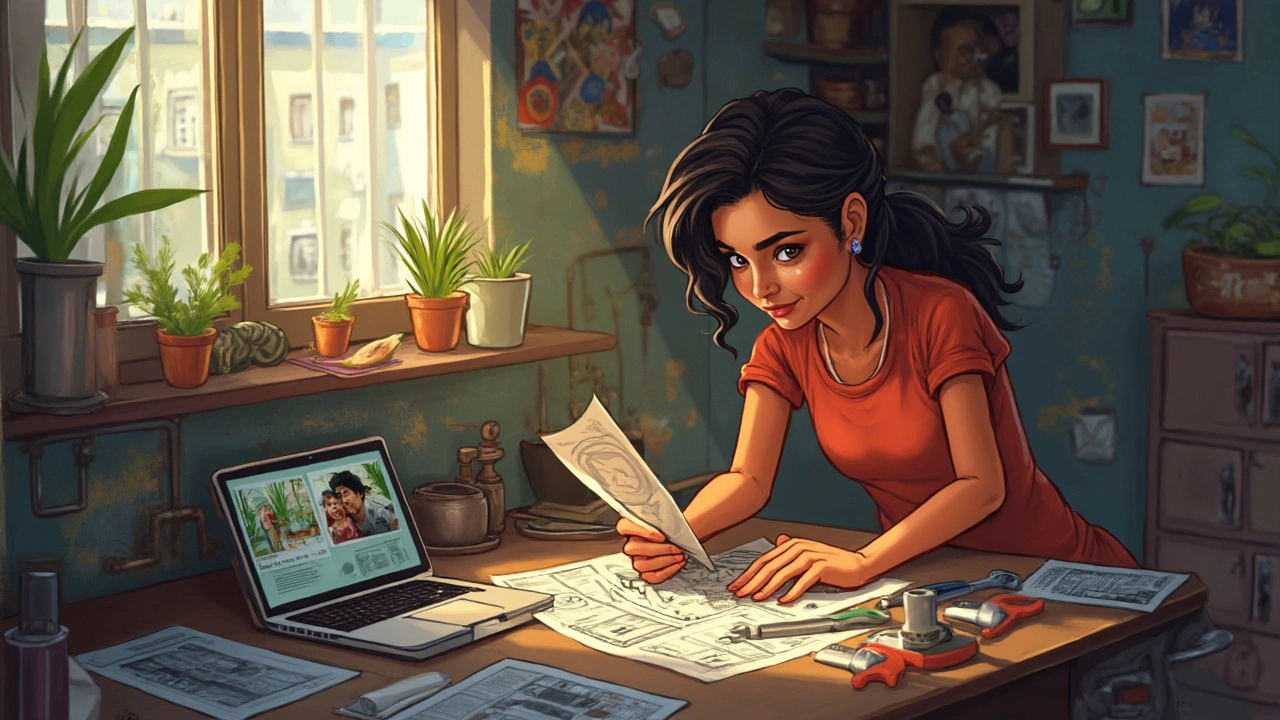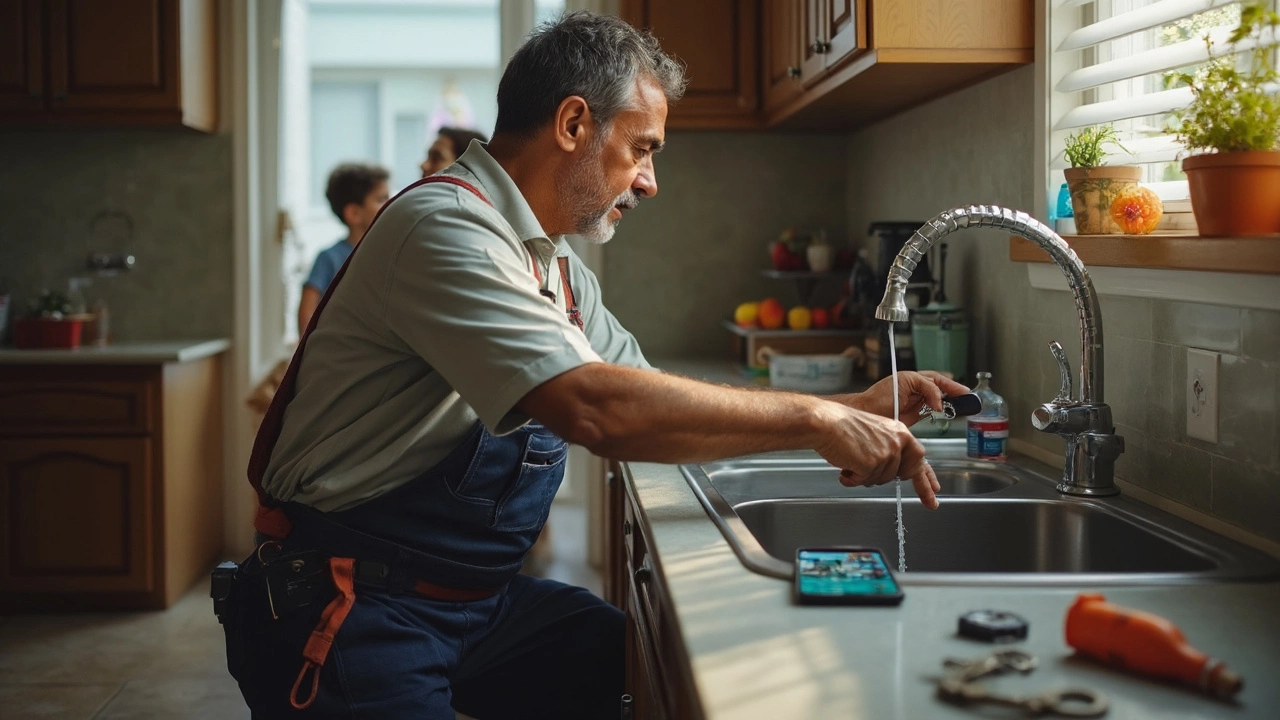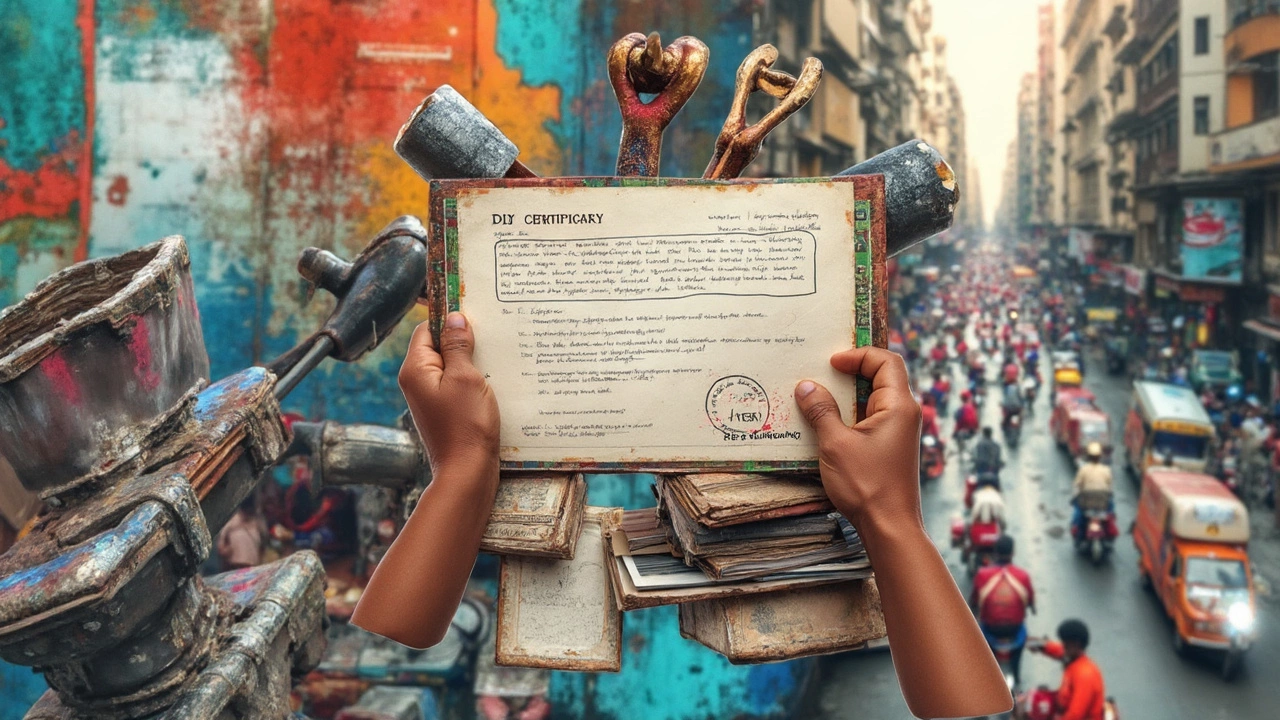How to Become a Self-Taught Plumber: Skills, Tips, and Real-Life Facts

So, you think you need a professional to fix every pipe or leak? Not always. There’s a quiet revolution going on in dusty crawl spaces and busy bathrooms—regular folks teaching themselves to fix their own plumbing. With YouTube, forums, hands-on trial, and a fair dose of stubbornness, more people are swapping out leaky faucets and repairing clogged drains than ever before. The plumbing world isn’t reserved only for those with years of trade school or an uncle named Joe who pulls out a wrench at family barbecues. The tools for learning are in your pocket—and a little bit of patience can go a long way.
The Basics: What You Really Need to Know First
Before you go unscrewing pipes under your kitchen sink or wrestling with the water heater, it’s essential to know what plumbing is actually about. Plumbing isn’t just about water; it’s about pressure, flow, and often, timing. Even the fanciest fixture is pretty simple—water in, water out, control the direction and pressure, keep everything leak-free. That being said, mistakes can get expensive. Flooded basements, soaked ceilings, and yes, weird smells that haunt you for days are all common rookie outcomes.
One thing that separates the YouTube plumber from the professional is their understanding of local plumbing codes. Every city has its set of do’s and don’ts, which cover everything from pipe size to water heater placement. Want a quick reality check? Swap out a $3 washer wrong, and you might end up with thousands in water damage. According to the Insurance Information Institute, water damage is one of the most common home insurance claims, accounting for about 23% of all property losses in the US.
If you’re thinking: "Isn’t it all just pipes and water?" You might be surprised how many different pipe materials you’ll encounter—PVC, PEX, copper, galvanized steel, just to name a few. Each one has its quirks and right (and very wrong) ways to work with it. For example, copper pipes need soldering and a torch, while PVC just snaps together with glue, but you’ll need to cut it precisely to avoid future leaks. Even measuring pipe diameter wrong by a fraction, and your new connection won’t hold.
Another unsung skill in plumbing is knowing how to turn off your water supply before you do anything. It’s not glamorous, but knowing where your shutoff valves are and how they work is Plumbing 101. And before you even start, always double-check for gas lines and electrical wiring. Boring? Maybe. Life-saving? Absolutely.
Learning Plumbing Without Formal School: Do Resources Really Work?
Can you master plumbing from the comfort of your couch? Let’s break it down. The old days of learning trades meant shadowing a pro for months, but today, there are actual YouTube playlists that can walk you through everything from unclogging a stubborn drain to installing a tankless water heater. The best part? Those videos pause and rewind. Nearly 78% of DIYers claim YouTube as their go-to source for home repairs, and a quick search pulls up thousands of step-by-step tutorials.
Here are a few types of resources that self-taught plumbers are using right now:
- Video tutorials: Channels like "Roger Wakefield" and "plumberparts" have millions of views and are famous for clear, honest, and mistake-friendly guidance.
- Online forums: Websites like Reddit’s r/Plumbing and TerryLove forums are packed with real plumbers and homeowners sharing nitty-gritty tips and stories. Don’t underestimate the wisdom in those comment sections.
- DIY Books: There are classic guides, like "Black & Decker’s Complete Guide to Plumbing," which include diagrams, checklists, even callout boxes for common mistakes—just in case you need a bathroom read.
- Local hardware stores: Believe it or not, those folks behind the counter usually have done the same fix dozens of times. They’re a gold mine for shortcut advice (and warnings on what not to do).
Practice is key. The first time you patch a leak, it won’t be pretty—maybe not even dry. But each fix builds confidence. Sometimes, mistakes are your best teacher. A seasoned DIYer, Emily, told HouseLogic, “If you’re willing to mop up your own messes and keep learning, you’ll get good quick. I started just to save cash and now my neighbors come calling.”
But let’s get honest. There’s a limit to DIY learning. Major jobs—like moving a main water line, installing a new sewer pipe, or anything to do with gas—should absolutely be handled by a licensed plumber. Insurance, warranties, and even city permits depend on having proper credentials. But for the basics? Sinks, leaks, new fixtures, small repairs—it’s absolutely possible to get good on your own.

Tools of the Trade: What You’ll Actually Use (and What’s Just Hype)
Walking down a plumbing aisle is like wandering into another world. There are gadgets for every possible problem—some genius, some total overkill. If you’re going the self-taught route, don’t blow your budget on flashy gadgets right away. Get the basics and learn to use them well. Here are the true must-haves:
- Pipe wrench: For gripping and turning pipes. The adjustable jaws make them work for countless jobs.
- Channel-lock (tongue-and-groove) pliers: Nothing beats these for tight spots where a wrench just won’t fit.
- Plumber’s tape (Teflon): Wrap it around threaded connections to create a watertight seal—absolutely critical if you want to avoid drips and leaks.
- Plunger and auger (drain snake): Clogged drain? These two solve 90% of blockages with no chemicals needed.
- Hacksaw or tubing cutter: For cutting pipes to size. Tubing cutters make smooth edges on copper and PEX, while hacksaws are good for plastic or old metal.
- Flashlight or headlamp: You’d be shocked how many plumbing jobs happen in the dark, cramped corners of your house.
Some fancier tools—like pipe threaders or inspection cameras—are mostly for deep-dive jobs. Rent these if you need them, don’t buy right away. Did you know that 60% of new DIYers overspend on unnecessary tools, according to a 2024 HomeAdvisor poll? Start lean, and only upgrade as you tackle more complex fixes.
One trick from professionals: keep a stack of old towels and a bucket with every job. Ninety percent of plumbing messes start the moment water squirts where it shouldn’t, and towels buy you the time you need to fix the issue before the mess spreads.
When DIY Plumbing Goes Wrong: Common Snafus and How to Avoid Them
Let’s not sugarcoat it—home plumbing repairs can go sideways fast. DIYers often get tripped up by the same mistakes, and knowing them can save you time, stress, and a whole lot of cash. Here’s a list of headaches waiting to happen (and what to do instead):
- Forgetting to turn off the water. So basic, but it’s probably the number-one rookie error. Always check—and test—shutoff valves before unscrewing anything.
- Overtightening fittings. More force isn’t always better—stripped threads or cracked pipe joints happen all the time.
- Using the wrong part. Toilet internals, faucet washers, P-traps – even a millimeter off and you’ll have a dripping mess. Always bring the original part with you to the store for a match-up.
- Poor solder joints (for copper pipes). Sloppy soldering is the fastest way to a hidden leak behind your walls. Watch videos, practice on scraps, and use plenty of flux.
- Ignoring local code. Cities really do enforce this stuff. A flashy bathroom reno means nothing if it doesn’t pass inspection. Check your city’s website for free code handbooks.
- Not planning for water hammer (that banging noise in pipes). This often happens with new fixtures or shutoff valves. The fix? Install water hammer arrestors—super easy and under $20.
Mistakes haunt some people more than others. Look at this:
| Common DIY Mistake | Repair Cost ($, average 2025) |
|---|---|
| Flood from missed shutoff | 2,300 |
| Bad soldered joint leak | 950 |
| Mismatched part replacement | 70 |
| Illegal work (fines) | 300-1,000 |
Here’s the golden rule: double-check your plan (and your parts) before you even touch the toolbox. If it feels like you’re rushing, slow down. And if you finish and there’s still a drip? Don’t ignore it. Leaks never just go away.
"The only difference between a confident DIYer and a pro is knowing when to stop and call a licensed plumber." — Roger Wakefield, Master Plumber
Admit when it’s over your head. If you tackle a repair and suddenly smell gas or see water pooling fast, stop. That’s time to reach out for help.

Should You Try It? The Real Benefits (and Risks) of Self-Taught Plumbing
So, can you become a self-taught plumber? The answer’s pretty clear—yes, for basic repairs, upgrades, and maintenance. The payoff isn’t just about saving money on service calls (though that’s a big bonus—average plumber visit is $350 these days). You’ll gain skills most folks don’t have, boost your home’s value, and enjoy a confidence boost every time you solve a problem on your own.
Many folks start just fixing a leaky faucet or swapping an old toilet. Before they know it, they’re remodeling their own bathrooms or even helping friends out. According to a 2025 Houzz survey, homeowners who tackled plumbing jobs themselves reported 40% higher satisfaction with their renovations, and three times as many described the process as "empowering." But remember, the sky isn’t the limit. Messing with main supply lines, sewer connections, or anything behind city code is still a no-go for non-licensed folks. No shame in picking your battles.
Here are some quick tips before you get started:
- Start small. Change a showerhead, fix a leaky hose bib, or unclog a drain. Build up from there.
- Watch recent tutorials. Plumbing standards change—use advice from the last two years, not clips from 2010.
- Work clean and organize as you go. Lay out tools and parts so you don’t panic mid-way through a job.
- Take photos before taking anything apart. Your smartphone is the best tool you own for tracking assembly order.
- Ask for help when you need it. There’s always a pro on call— sometimes asking questions in a forum means avoiding a disaster.
Being self-taught in plumbing isn’t just about fixing stuff. It’s working with your hands, beating that annoying drip, and learning skills that will last a lifetime. Tackle the basics, stay humble, never stop asking for advice, and you’ll be surprised how many plumbing "emergencies" you can handle on your own.
If you’re looking for a place to start, try changing out a kitchen faucet or fixing a slow drain—those are classic first-timer wins. Who knows? You might just end up being the go-to fix-it guy for your friends, neighbors, or even that uncle Joe who thought he knew everything.

Post-Comment